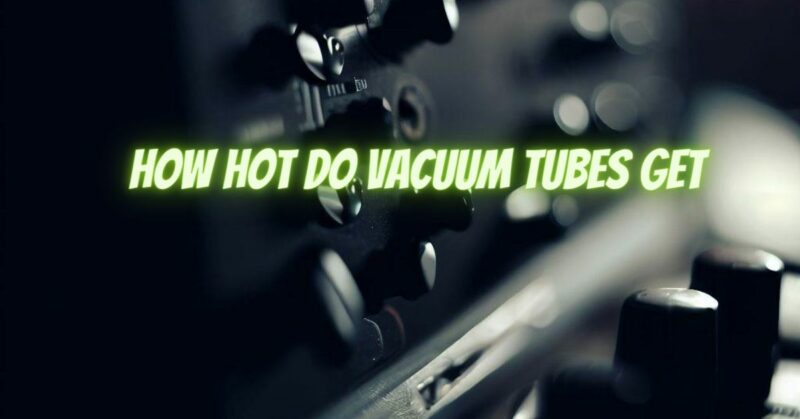Vacuum tubes, also known as electron tubes or valve tubes, have been an essential component in electronic devices for decades. These tubes are known for their unique sound characteristics and have been used in amplifiers, radios, and other electronic equipment. One common question among enthusiasts and users is, “How hot do vacuum tubes get?” In this article, we’ll explore the factors that influence the operating temperature of vacuum tubes and discuss the typical temperature ranges they reach during normal operation.
The Basics of Vacuum Tubes
Before delving into temperature specifics, it’s essential to understand the basic components and functions of vacuum tubes.
A vacuum tube consists of several key elements:
- Cathode: The cathode emits electrons when heated, forming an electron cloud.
- Anode (Plate): The anode attracts the emitted electrons, creating an electron flow or current.
- Grid: The grid controls the flow of electrons between the cathode and anode, acting as a valve to amplify or control signals.
- Vacuum: The tube is evacuated to create a vacuum inside, eliminating the presence of air or gas, which could interfere with electron flow.
Factors Influencing Vacuum Tube Temperature
The operating temperature of a vacuum tube is influenced by several factors:
- Cathode Temperature: The temperature of the cathode, specifically, is crucial. Vacuum tubes rely on thermionic emission, where electrons are emitted from a heated cathode. The cathode temperature typically ranges from 700 to 1,200 degrees Celsius (1,300 to 2,200 degrees Fahrenheit) during operation.
- Plate Dissipation: The power dissipated by the anode (plate) in the form of heat is a significant contributor to the overall temperature of the tube. Plate dissipation is a key specification in tube datasheets and determines the safe operating conditions.
- Ambient Temperature: The temperature of the surrounding environment affects the overall tube temperature. A vacuum tube operating in a hot environment will reach a higher temperature than one in a cooler environment.
Typical Operating Temperatures
The operating temperatures of vacuum tubes can vary widely depending on the type and purpose of the tube. However, here are some general temperature ranges for different types of vacuum tubes:
- Small Signal Tubes: Small signal tubes used in preamplifiers and signal processing typically operate at lower temperatures. Their cathodes may reach temperatures between 700 to 900 degrees Celsius (1,300 to 1,650 degrees Fahrenheit).
- Power Tubes: Power tubes used in amplifiers and high-power applications operate at higher temperatures. Their cathodes may reach temperatures between 900 to 1,200 degrees Celsius (1,650 to 2,200 degrees Fahrenheit).
- Rectifier Tubes: Rectifier tubes, which convert alternating current (AC) to direct current (DC) in power supplies, can run hot due to their high plate dissipation.
- Transmitting Tubes: Transmitting tubes used in radio transmitters and high-power applications can reach extremely high temperatures, often exceeding 1,200 degrees Celsius (2,200 degrees Fahrenheit).
Safety Precautions
Given the high operating temperatures of vacuum tubes, it’s essential to exercise caution when working with them. Here are some safety precautions:
- Allow Tubes to Cool: After powering off an amplifier or device with vacuum tubes, allow the tubes to cool down before handling them, as they can remain hot for some time.
- Use Proper Ventilation: Ensure that vacuum tubes have adequate ventilation to dissipate heat. Overheating can lead to reduced tube life and performance.
- Observe Manufacturer Recommendations: Follow the manufacturer’s guidelines and specifications for safe tube operation and replacement.
Vacuum tubes are remarkable electronic components known for their ability to produce warm and rich tones in audio amplifiers and their historical significance in electronic technology. Understanding how hot vacuum tubes get during operation is crucial for proper usage and maintenance. By respecting the operating parameters and taking appropriate safety precautions, you can enjoy the unique qualities of vacuum tubes while ensuring their longevity and reliability.


